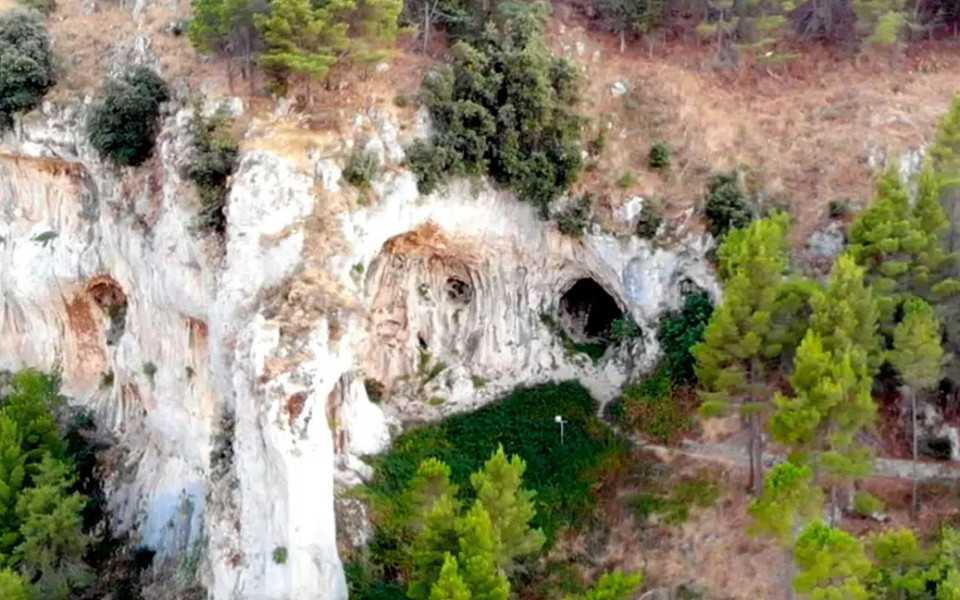The first stop to begin your adventurous tour of Gratteri and explore its origins is to meet in the Main Square in front of the Mother Church. There, you will find a small villa housing a stone conch shell, which likely holds the most ancient history of the ancient village known as "dei crateri".
According to ancient descriptions, indeed, Gratteri takes its name from several limestone rock craters found in its territory, such as the one known as Grotta Grattàra.
These are cliffs and precipices deeply marked by karst phenomena that have given rise to both surface forms (poljes, sinkholes, swallow holes) and underground features (Ciacca abyss, Puraccia well, Panni cave, Cula cave, Fonda cave, Stefàna cave, Grattàra cave), which are significant from a geological and speleological point of view.
Most likely, in fact, the fountain in the square, called "della Ninfa," could be connected, both in terms of resemblance and meaning, to the one in Grotta Grattàra. This cave has been formed over millennia by the perpetual dripping of waters considered purifying and revitalizing, and it is from this cave that the town probably takes its name: "oppidum a Cratere ob perennem stillantem aquam celebri dictum" (R. Pirri, op. cit., Vol.II, p. 829, Palermo 1644).
La Grotta Grattàra is an integral part of the history and folklore of the place, as it is believed to be the dwelling place of La Befana ("a Vecchia Strina"), the protagonist of a very ancient fairy tale.
According to the legend, in that enchanting cave, there resides a solitary and stern little woman who acts as the guardian of the cave. On the last night of the year, ethereal and invisible, she descends through the chimneys into the houses of the people of Gratteri to fill the stockings of the little ones with gifts.
Indeed, this ancient tale holds significant anthropological interest as it relates to the ritual exchange of gifts, masks, and rites of passage during the winter period to renew the cycle of the year and, along with it, the very life of the community.
The legendary presence of a female entity, guardian of a cave, and a regenerative water source would indeed refer to the symbolic horizon of an ancient myth that could be connected to a primordial indigenous place of worship for chthonic deities. According to ancient peoples, these deities were often represented by nymphs who embodied the spirit of the place, the so-called "Genius Loci".
Around that spring, we will then tell you a popular story, the story of a local virgin who let herself die because she was depicted naked in stone.
It is said that in the past, the fountain was surmounted by a nymph, a statue of a completely naked woman that made waterspout from her breasts.
Later, as we cross the village, we will make our way towards the Park of Grotta Grattàra, which is at the origins of the name Gratteri.
The entrance to the Grotta Grattàra Park is accessed from the plateau of San Nicola through a winding but passable trail that meanders through a lush pine forest. It leads to a small massif called "lazzu di vuoi" (oxen's resting place), and from there, along a short flat stretch, you reach the Grotta Grattàra located about 300 meters from the village of Gratteri, whose toponym likely contributed to giving the name to the town.
In this regard, the historian Passafiume wrote in the 17th century, "...that there is a stone crater located at the centre of the cave, shaped with splendid natural art; this rock has an interior basin sixteen feet high and ten feet wide, the top of which is hollow like a crater formed by the perennial dripping of water" (Passafiume B., op. cit., 1645).
The access to the spring is made up of a small natural staircase formed by the footsteps of man over the course of millennia.
In the crevices of its outer ledges, which are otherwise inaccessible and adorned with wild ferns and pistachio trees, thousands of swallows nest, adding to the delightful atmosphere with their cheerful chirping, particularly during springtime for those who visit.
As we ascend even higher, we will reach the slopes of Pizzo di Pilo, rising over 1000 meters above sea level, where an indescribably panoramic landscape unfolds before us, inviting us to embrace its beauty.
For more details about the excursion and the itinerary map, please visit the following link: eventi.visitgratteri.com



